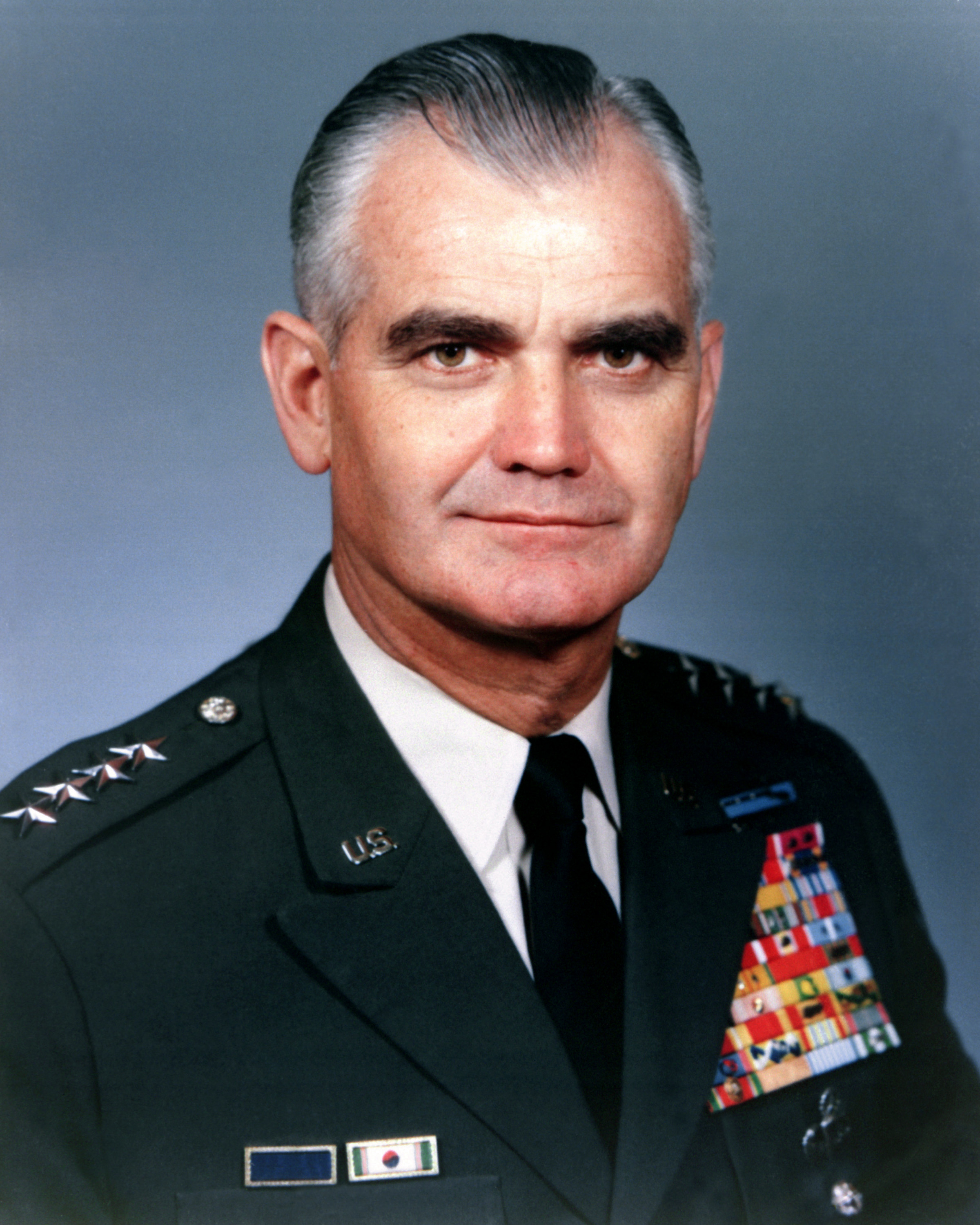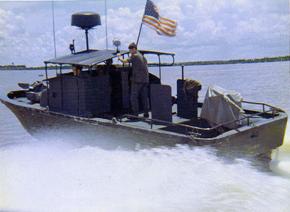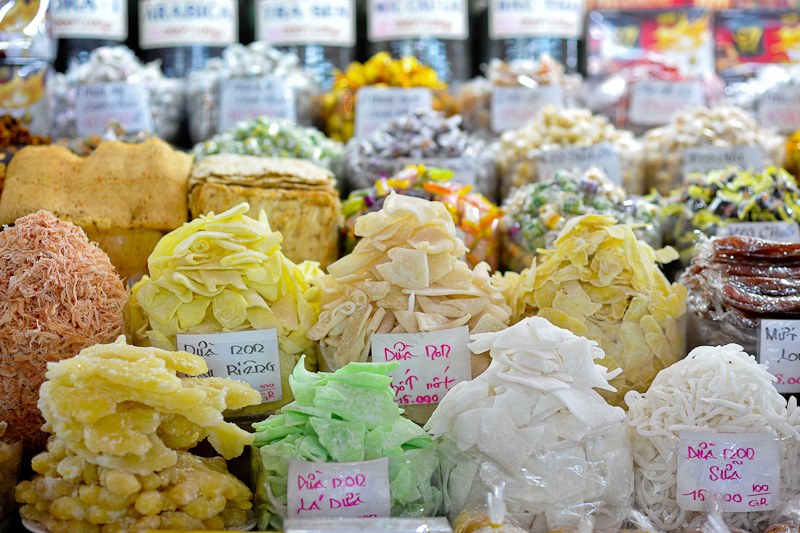|
Battle Of Bến Tre
The Battle of Bến Tre took place during the Tet Offensive of the Vietnam War when Vietcong (VC) forces attacked Bến Tre, the capital of Kien Hoa Province, on 31 January 1968. The battle lasted until 5 February when U.S. and South Vietnamese forces ejected the VC who suffered 328 killed. In the United States, the battle is best remembered for a quote from an unnamed American Major, reported by journalist Peter Arnett, that "It became necessary to destroy the town to save it." This quote has often been paraphrased as "We had to destroy the village in order to save it." The veracity of the original quote has often been questioned. Background Wedged between two branches of the Mekong River and crisscrossed by several smaller canals and rivers, Bến Tre lies 13.3 km south of Mỹ Tho. In 1967 it had a population of approximately 74,544 and was the capital of Kien Hoa Province, an island province surrounded by water with no bridge links to any of its four neighboring provin ... [...More Info...] [...Related Items...] OR: [Wikipedia] [Google] [Baidu] |
Tet Offensive
The Tet Offensive was a major escalation and one of the largest military campaigns of the Vietnam War. It was launched on January 30, 1968 by forces of the Viet Cong (VC) and North Vietnamese People's Army of Vietnam (PAVN) against the forces of the South Vietnamese Army of the Republic of Vietnam (ARVN), the United States Armed Forces and their allies. It was a campaign of surprise attacks against military and civilian command and control centers throughout South Vietnam. The name is the truncated version of the Lunar New Year festival name in Vietnamese, Tết Nguyên Đán, with the offense chosen during a holiday period as most ARVN personnel were on leave. The purpose of the wide-scale offensive by the Hanoi Politburo was to trigger political instability, in a belief that mass armed assault on urban centers would trigger defections and rebellions. The offensive was launched prematurely in the late night hours of 30 January in the I and II Corps Tactical Zones of South V ... [...More Info...] [...Related Items...] OR: [Wikipedia] [Google] [Baidu] |
William Robertson Desobry
William Robertson Desobry (September 11, 1918 – January 12, 1996) was a senior U.S. Army field commander in Germany during the Cold War, and a Lieutenant General in the United States Army. General Desobry was a decorated hero from World War II, and played a significant role as an advisor to the Republic of Vietnam Army and on the Army Staff during the Vietnam War. In addition to commanding a division and corps, he was the Commanding General of the Armor Center and was the President of the Tank Task Force, which led to the creation of the M1 Abrams. After 34 years in the Army and service in two wars, Lieutenant General Desobry completed his military career in 1975. Education Desobry received a Bachelor of Science degree in 1941 from Georgetown University, where he was a distinguished graduate of their Reserve Officer Training Corps program and earned a Regular Army commission. Early life and career Born in Manila, the Philippine Islands in 1918, Desobry was the son of ... [...More Info...] [...Related Items...] OR: [Wikipedia] [Google] [Baidu] |
Patrol Boat, River
Patrol Boat, Riverine, or PBR, is the United States Navy designation for a small rigid- hulled patrol boat used in the Vietnam War from March 1966 until 1975. They were deployed in a force that grew to 250 boats, the most common craft in the River Patrol Force, Task Force 116, and were used to stop and search river traffic in areas such as the Mekong Delta, the Rung Sat Special Zone, the Saigon River and in I Corps, in the area assigned to Task Force Clearwater, in an attempt to disrupt weapons shipments. In this role they frequently became involved in firefights with enemy soldiers on boats and on the shore, were used to insert and extract Navy SEAL teams, and were employed by the United States Army's 458th Transportation Company, known as the 458th Sea Tigers. The PBR was replaced by the Special Operations Craft – Riverine (SOC-R) Design The PBR was a versatile boat with a fiberglass hull and water jet drive which enabled it to operate in shallow, weed-choked rivers. ... [...More Info...] [...Related Items...] OR: [Wikipedia] [Google] [Baidu] |
Mobile Riverine Force
In the Vietnam War, the Mobile Riverine Force (MRF) (after May 1967), initially designated Mekong Delta Mobile Afloat Force, and later the Riverines, were a joint US Army and US Navy force that comprised a substantial part of the brown-water navy. It was modeled after lessons learned by the French experience in the First Indochina War of Dinassaut and had the task of both transport (of soldiers and equipment) and combat. The primary base was at Đồng Tâm Base Camp, with a floating base at the base of the Mekong River. It played a key role in the Tet Offensive. Concept of operations The Mekong Delta Mobile Afloat Force was originally conceived as providing an all weather "strike" capability in the Mekong Delta, to actively prosecute contact with Viet Cong units in the Vietnam War. A "strike" force was inherently and essentially different from the existing Navy interdiction and patrol forces (the River Patrol Boats of Operation Game Warden, and the coastal blockade of Operati ... [...More Info...] [...Related Items...] OR: [Wikipedia] [Google] [Baidu] |
Republic Of Vietnam National Police
The Republic of Vietnam National Police – RVNP ( vi, Cảnh sát Quốc gia Việt Nam Cộng hòa, links=no), Police Nationale de la République du Vietnam or Police Nationale for short ( vi, Cảnh sát Quốc gia, links=no – CSQG) in French, was the official South Vietnamese national police force from 1962 to 1975, operating closely with the Army of the Republic of Vietnam (ARVN) during the Vietnam War. __TOC__ History The Republic of Vietnam National Police was officially created by President Ngô Đình Diệm's national decree in June 1962, integrating all the existing internal security and paramilitary agencies raised by the French Union authorities during the First Indochina War between 1946 and 1954, into a single National Police Force who answered to the Directorate General of National Police (Vietnamese: ''Tổng cục cảnh sát quốc gia'' – TCCSQG). These included the Vietnamese ''Sûreté'', the Saigon Municipal Police, elements of the colonial National G ... [...More Info...] [...Related Items...] OR: [Wikipedia] [Google] [Baidu] |
Central Intelligence Agency
The Central Intelligence Agency (CIA ), known informally as the Agency and historically as the Company, is a civilian foreign intelligence service of the federal government of the United States, officially tasked with gathering, processing, and analyzing national security information from around the world, primarily through the use of human intelligence (HUMINT) and performing covert actions. As a principal member of the United States Intelligence Community (IC), the CIA reports to the Director of National Intelligence and is primarily focused on providing intelligence for the President and Cabinet of the United States. President Harry S. Truman had created the Central Intelligence Group under the direction of a Director of Central Intelligence by presidential directive on January 22, 1946, and this group was transformed into the Central Intelligence Agency by implementation of the National Security Act of 1947. Unlike the Federal Bureau of Investigation (FBI), which is a ... [...More Info...] [...Related Items...] OR: [Wikipedia] [Google] [Baidu] |
Military Assistance Command, Vietnam
U.S. Military Assistance Command, Vietnam (MACV) was a joint-service command of the United States Department of Defense. MACV was created on 8 February 1962, in response to the increase in United States military assistance to South Vietnam. MACV was first implemented to assist the Military Assistance Advisory Group (MAAG) Vietnam, controlling every advisory and assistance effort in Vietnam, but was reorganized on 15 May 1964 and absorbed MAAG Vietnam to its command when combat unit deployment became too large for advisory group control. MACV was disestablished on 29 March 1973 and replaced by the Defense Attaché Office (DAO), Saigon. The DAO performed many of the same roles of MACV within the restrictions imposed by the Paris Peace Accords until the Fall of Saigon. The first commanding general of MACV (COMUSMACV), General Paul D. Harkins, was also the commander of MAAG Vietnam, and after reorganization was succeeded by General William C. Westmoreland in June 1964, followed by Ge ... [...More Info...] [...Related Items...] OR: [Wikipedia] [Google] [Baidu] |
Vĩnh Long
Vĩnh Long () is a city and the capital of Vĩnh Long Province in Vietnam's Mekong Delta. Vĩnh Long covers and has a population of 147,039 (as of 2009). The name was spelled 永 隆 ("eternal prosperity") in the former Hán Nôm writing system. Location Vĩnh Long is on the Cổ Chiên River, which branches out from the Mekong River at the narrows of Mỹ Thuận about upstream, only to meet it later downstream. Across the Cổ Chiên river from Vĩnh Long are the An Binh and Bình Hòa Phước islands, some across, with the Mekong River on the other side. A number of canals run through Vĩnh Long, with tall vehicular bridges crossing them. Transport by boat is possible, although parts of the town, particularly An Binh, become unreachable at low tide. Vĩnh Long is about two hours from the large city of Cần Thơ in the adjacent Hậu Giang Province, and about three hours from Saigon. The floating market town of Cái Bè is on the other side of the An Binh island a ... [...More Info...] [...Related Items...] OR: [Wikipedia] [Google] [Baidu] |
Cai Lậy (town)
Cai Lậy is a town of Tien Giang province in the Mekong Delta The Mekong Delta ( vi, Đồng bằng Sông Cửu Long, lit=Nine Dragon River Delta or simply vi, Đồng Bằng Sông Mê Kông, lit=Mekong River Delta, label=none), also known as the Western Region ( vi, Miền Tây, links=no) or South-weste ... region of Vietnam. The town was separated from Cai Lậy District in 2013. References Districts of Tiền Giang province County-level towns in Vietnam {{TienGiang-geo-stub ... [...More Info...] [...Related Items...] OR: [Wikipedia] [Google] [Baidu] |
Mekong Delta
The Mekong Delta ( vi, Đồng bằng Sông Cửu Long, lit=Nine Dragon River Delta or simply vi, Đồng Bằng Sông Mê Kông, lit=Mekong River Delta, label=none), also known as the Western Region ( vi, Miền Tây, links=no) or South-western region ( vi, Tây Nam Bộ, links=no), is the region in southwestern Vietnam where the Mekong River approaches and empties into the sea through a network of distributaries. The Mekong delta region encompasses a large portion of south-western Vietnam of over . The size of the area covered by water depends on the season. Its wet coastal geography makes it an important source of agriculture and aquaculture for the country. The delta has been occupied as early as the 4th century BC. As a product of Khmer, Vietnamese, Chinese, and French settlement in the region, the delta and its waterways have numerous names, including the Khmer term Bassac to refer to the lower basin and the largest river branch flowing through it. After the 1954 Ge ... [...More Info...] [...Related Items...] OR: [Wikipedia] [Google] [Baidu] |
Tết
Tết (), short for Tết Nguyên Đán (Chữ Hán: 節元旦), Spring Festival, Lunar New Year, or Vietnamese Lunar New Year is one of the most important celebrations in Vietnamese culture. The colloquial term "Tết" is a shortened form of , with Old Vietnamese origins meaning "Festival of the First Morning of the First Day". Tết celebrates the arrival of spring based on the Vietnamese calendar, which usually has the date on January or February in the Gregorian calendar. ''Tết Nguyên Đán'' (Spring Festival or Lunar New Year) is not to be confused with ''Tết Trung Thu'' (Mid-Autumn Festival), which is also known as ''Children's Festival'' in Vietnam. ''Tết'' itself only means festival, but is often nominally known as "Lunar New Year Festival" in Vietnamese, as it is often seen as the most important festival amongst the Vietnamese diaspora, with ''Children's Festival'' (Tết Trung Thu) often regarded as the second-most important. Vietnamese people celebrate Tết a ... [...More Info...] [...Related Items...] OR: [Wikipedia] [Google] [Baidu] |





